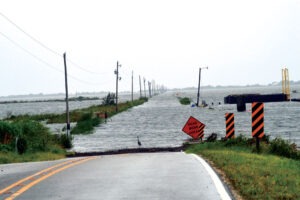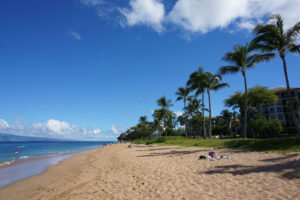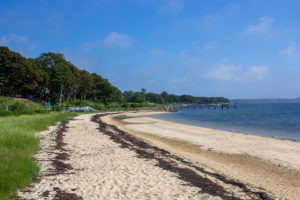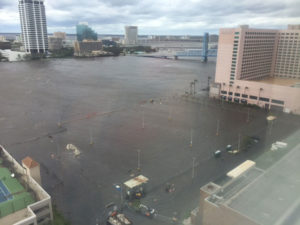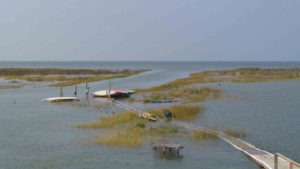
For Project YOKO to work, all the right people had to cross paths at just the right time. And then, one historic Navy ship had to sink into the ocean off the British Virgin Islands (BVI) in just the right way, leaving the giant octopus made of rebar and mesh draped clear across its deck. So far, so good. Now, if the project collaborators—an artist collective, an environmental research nonprofit, a community nonprofit, and a band of entrepreneurs including Richard Branson—see their vision realized, this wildly imaginative and multifaceted project will raise awareness of the fragile state of the BVI region’s coral reefs, turn the tide on a dwindling population of goliath groupers, provide a novel artificial reef for divers, and generate funds to pay for swimming lessons for local kids.
The Kodiak Queen, a fuel barge and one of only five boats to survive the 1941 attack on Pearl Harbor, had been “languishing in a junkyard in Road Town, the capital of BVI.” When Branson, whose private Necker Island is in BVI, heard about the ship from a local mechanic, he thought it might be saved by turning it onto a dive site. He looped in Maverick1000, a group of entrepreneurs he hosts each year on his island. At the same meeting, the group heard from the leader of a local foundation, Unite BVI about environmental threats to the coral reefs in the region, reefs that account for about 45 percent of BVI’s tourism. Group member Aydika James, who is also art director for the artist collective Secret Samurai Productions, was inspired to pitch a project to Maverick1000, which several members, including Branson, funded on the spot.
Secret Samurai, “an art production and solution engineering team,” describes itself as “a diverse network of artists, scientists, innovators and makers who produce ‘engagement art’ installations across all spectrums.”
As James explains the project concept,
Sign up for our free newsletters
Subscribe to NPQ's newsletters to have our top stories delivered directly to your inbox.
By signing up, you agree to our privacy policy and terms of use, and to receive messages from NPQ and our partners.
An old abandoned ship is a great platform for an art piece, and an art piece could be a great tourism draw—we could tie proceeds from this ecotourism site back into marine health maintenance efforts and swim instruction programs for the island’s kids.
And thus, Project YOKO was spawned. The name is “a mashup of Kodiak Queen and the boat’s former name, Navy Fuel Barge YO-44.” Along the way, some of the project partners introduced James’s team to the environmental research nonprofit Beneath the Waves, a group that describes its role as “working to conserve, protect, and restore the health of our oceans through research and education.” It produces “immersive and engaging media pieces that connect the public to the ocean.”
While Secret Samurai designed the massive, hollow octopus, the body and 80-foot tentacles of the sea creature are being put to good use by Beneath the Waves. The structure “will act as a protected environment in which scientists will foster the repopulation of the dwindling goliath grouper, whose presence in the waters helps form the ecosystem that is essential to the health of the coral reefs.”
The many chambers of the boat, which now rests on the ocean floor beneath the octopus, have been transformed into “an interactive art experience” expected to draw—and educate—divers and ecotourists. And while most dive sites are free, the project organizers are asking anyone who visits this most unique underwater environment to make a $10 donation, which will support two causes important to Unite BVI: marine health research, and swim lessons for local kids, more than 10 percent of whom don’t know how to swim, even though their world is surrounded by the ocean.
As James notes about the project, “While it took a complex network of organizations and actors to bring it about, the whole purpose is that eventually all the people who put this together will be forgotten, and the new life and economy the reef will create will remain.”—Eileen Cunniffe



